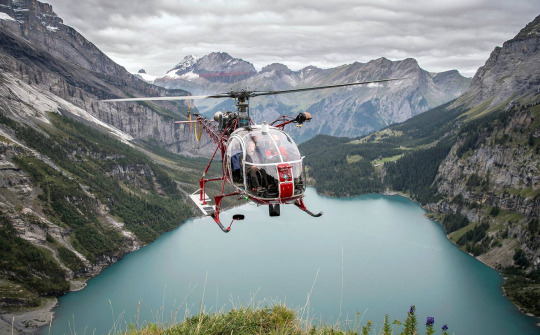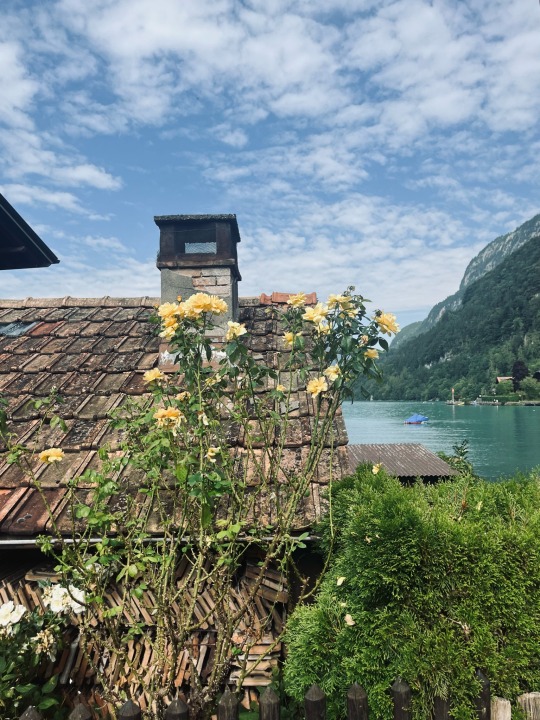#swizerland
Text

Castelgrande Bellinzona. A combination of Brutalist architecture and a medieval site in Switzerland. Arch. Aurelio Galfetti
1K notes
·
View notes
Text









Alain Tanner - Messidor (1979)
29 notes
·
View notes
Text

🇨🇭 Sandro Hungerbühler, swiss wrestler of 60kg at the Juniors Swiss Greco-roman Wrestling Championship 2023 (credits to HDTV 1 - Wrestling)
#wrestling#muscle men#guys in lycra#men in lycra#singlet#slavic#lycra bulge#swiss#swizerland#youngsters
67 notes
·
View notes
Text



🛩️ Back in the 1950s, as the United States Air Force sought precision timekeeping, Blancpain answered the call, inspired by its success with the iconic Fifty Fathoms diver's watch.
🇨🇭 Founded in 1735 by Jehan-Jacques Blancpain in Switzerland, Blancpain SA has been synonymous with luxury watchmaking excellence for centuries. Nowadays Blancpain is the oldest registered watch brand in the world.
⌚️ These specialized chronographs, offered to American military pilots through the esteemed distributor Allen V. Tornek, represent a rare and coveted piece of horological history. With only a limited number of prototypes believed to have been produced, the Air Command chronograph is a true collector's dream.
#TimeTrek#Blancpain#AirCommand#TimepieceHistory#men’s watches#swiss watch#luxury watches#swiss#swizerland#usa#military#pilots#aviation#Jehan-Jacques Blancpain#companies#brands#watches#watch#clock#time#history#diver's watch#chronometer#masterpiece#air force#timekeeping#watchmaking#collection#company#1735
8 notes
·
View notes
Text

Bird of Paradise Clock by Gerald Genta
#bird of paradise#ave del paraiso#clock#reloj#swiss#suizo#designer#diseñador#gerald genta#swizerland#suiza#europe#europa
23 notes
·
View notes
Text


gouache studies of swiss landscape
#swizerland#painting#artists on tumblr#landscape#mountains#my art#popping back to post these hope all my mutuals are well <3
11 notes
·
View notes
Text

JOIN_NOW
#san jose sharks#taylor swift#michael cera#yellowjackets#star wars#ryan gosling#artists on tumblr#donald trump#rwby#swizerland#margot robbie#easter#shark kin#whale shark#tiktok#so hot 🔥🔥🔥#cars#lionel messi#video games#movies#valentines gifts#gift ideas#switzerland
2 notes
·
View notes
Text



“Ich habe in Venezuela viel verhandelt, das stimmt, aber ich habe dort auch eine neue Leidenschaft entdeckt: das Fliegen.
Man muss wissen, dass meine Familie und ich in unserer Freizeit zwei Aktivitäten hatten: den Berg und das Meer.
Um die Kondition für die Aufstiege zu erhalten, erklomm ich jeden Morgen um 6 Uhr den Berghang des Avilas, des Bergmassivs über Caracas. Der Strand war dem Wochenende vorbehalten. Ich hatte mein Offshore-Boot in Porto La Cruz verankert, mehr als 300 Kilometer vom Caracas entfernt. Jeden Freitagabend nach der Arbeit nahm ich das Auto, um stundenlang auf steilen Straßen zu fahren - es gab noch keine Autobahn- und endlich gegen 23 Uhr am Hafen anzukommen, auf dem Boot zu schlafen und am nächsten Morgen bi La Tortuga zu navigieren, eine erhaltene und unbewohnte Insel ein unberührtes Stück Natur. Trotz der beiden Motoren des Bootes brauchte es zwei Stunden Navigation, um an der Insel anzudocken, wenn das Wetter günstig war. Und wenn das Meer unruhig war, konnte man fünf Stunden brauchen! Eine immer sportliche und manchmal ziemlich mühsame Strecke. Und dann, am Sonntagabend, musste ich auf der gleichen Route nach Caracas zurückkehren…
An einem Samstag, an dem die Überquerung besonders schwierig gewesen war, ruhte ich mich ein bisschen am Ufer aus, als ich ein Flugzeug brummen hörte, es sich nähern und elegant auf dem Strand landen sah. Ich ging zum Piloten, um zu fragen, woher er kam.
"Von Caracas, ich bin vor 25 Minuten gestartet."
Ich war verblüfft. Ich komme her für den Tag, präzisierte der Pilot. Am Ende des Nachmittags kehre ich zurück nach Hause. Und ich, ich verbrachte Stunden im Auto und Stunden auf dem Boot, um endlich diesen Strand zu erreichen! Am Montagmorgen, zurück in Caracas, meldete ich mich beim Aeroclub an: Ich wollte meine Pilotenlizenz so schnell wie möglich erwerben. Jeden Morgen besuchte ich sehr früh einen praktischen und theoretischen Kurs, und drei Monate später, nachdem ich 50 Stunden für meine Lizenz geflogen war, landete ich selbst auf dem Strand von La Tortuga!
Noch heute liebe ich das Fliegen innig! Der Start, das immer wechselnde Wetter, die Landung, die Handhabung des Flugzeugs, das weckt sehr starke Emotionen. Ich kaufte mir dann ein kleines Sechs-Plätze-Flugzeug, eine Cessna 206 Turbo, und entdeckte Venezuela von oben; die riesigen Wasserfälle von Salto Angel im Amazonas und die Weitläufigkeit des Canaimas im Süden des Landes … „
source: https://www.schweizer-illustrierte.ch/stars/schweiz/ex-nestle-chef-peter-brabeck-mit-helifliegen-ueberwand-ich-meinen-krebs
text: Aufstiege: Von den verschneiten Bergen bis zur Geschäftsleitung von Nestlé – eine Eroberung der Gipfel, Peter Brabeck-Letmathe
#eternal love#for#autobiography#Peter Brabeck-Letmathe#Aufstiege#flying#helicopter#pilot#aviation#Caracas#swizerland
4 notes
·
View notes
Text



☽☾ Gjon's Tears ☽☾
Gjon Muharremaj known professionally as Gjon's Tears, is a Swiss singer and songwriter. He was scheduled to represent Switzerland in the Eurovision Song Contest 2020 with the song "Répondez-moi" prior to the event's cancellation. He was internally selected again as the country's representative for the 2021 contest with "Tout l'univers". He finished in third place with 432 points, the best placing for Switzerland since 1993.
"Tout l'univers" is a song by Swiss singer Gjon's Tears released as a single on 10 March 2021 by Jo & Co and Sony Music Entertainment. It was written and composed by the singer himself alongside Nina Sampermans, Wouter Hardy and Xavier Michel. The song represented Switzerland in the Eurovision Song Contest 2021.
Gjon's Tears - "Tout l'univers"
Released 10 March 2021
Country Switzerland
Language French
Semi-final result 1st
Semi-final points 291
Final result 3rd
Final points 432
6 notes
·
View notes
Text


feel like I’m in a fairy tale ~
3 notes
·
View notes
Photo

The other day in Crans Montana for the Eclectica concours d’élégance du @automobileclubcm what a fantastic day….some great characters to photograph…fun to work like this 📸😎 #batmobile #concoursdelegance #swizerland #auto #eclectica #photography #classiccars #driveinstyle #drive #automotive #wheels #oldtimer #luxury #elegance #goodtimes #timewellspent #skate #porsche #cobra #911 #bmw #ferrari #bmwz8 (at Crans Montana, Alpes, Switzerland) https://www.instagram.com/p/CjNKQrRIvRb/?igshid=NGJjMDIxMWI=
#batmobile#concoursdelegance#swizerland#auto#eclectica#photography#classiccars#driveinstyle#drive#automotive#wheels#oldtimer#luxury#elegance#goodtimes#timewellspent#skate#porsche#cobra#911#bmw#ferrari#bmwz8
20 notes
·
View notes
Text

Sweater Weather 🍂 Audrey Hepburn • Photographed in Burgenstock Switzerland 1955
#vintage fashion#audrey hepburn#cardigan sweater#sweater weather#vintage sweater#fallfashion#fall vibes#1950sfashion#swizerland#swissalps#vintage shopping
16 notes
·
View notes
Text

🇨🇭 Peter Zberg dominating Lars Epp at the Juniors Swiss Greco-roman Wrestling Championship 2023 (credits to HDTV 1 - Wrestling)
#wrestling#muscle men#guys in lycra#men in lycra#singlet#lycra bulge#ass like that#man butt#man bulge#youngsters#swiss#swizerland
26 notes
·
View notes
Text




🇺🇲🤝🇨🇭 The BALL Trainmaster Standard Time is a timepiece that merges classic elegance with modern functionality! Crafted by BALL Watch Company, it pays tribute to the iconic railway timekeeping systems that once governed the schedules of trains worldwide.
🚂 Currently BALL Watch Company SA is a Swiss luxury watch company based in La Chaux-de-Fonds, Switzerland. But originally it was founded in 1891 by Webb C. Ball in Cleveland, Ohio, and is deeply linked to American railroad history.
⌚️ Inspired by the golden age of rail travel, the Trainmaster Standard Time embodies the spirit of precision and reliability. With its distinctive design and timeless aesthetic, this exceptional timepiece captures the essence of vintage railway pocket watches, exuding sophistication and charm.
⚙️ Engineered to withstand the demands of the railway environment, the watch features a high-precision movement, ensuring accurate timekeeping even in challenging conditions. Whether worn by contemporary explorers or enthusiasts of horological history, this watch seamlessly combines tradition with cutting-edge technology.
⏱️ The name "Standard Time" harks back to the introduction of standardized timekeeping practices in the 19th century, revolutionizing the way people synchronized their schedules and travel plans.
🌟 Whether adorning your wrist on a daily commute or a grand adventure, this exceptional timepiece stands as a symbol of precision and sophistication.
#timetrek#brands#clock#watch#watches#time#companies#company#history#swiss made#swizerland#ball watch company#ball watches#standard time#luxury watches#ball trainmaster#cleveland#ohio#railroad#railway#travelling#wristwatch#wrist watch#classic watch#mens watches#retro aesthetic#vintage#rail travel#railway pocket watch#heritage
5 notes
·
View notes
Text
https://news.mongabay.com/2022/06/swiss-pledge-to-stop-illegal-gold-imports-from-brazil-indigenous-reserves/
Switzerland imported 24.5 tonnes of gold in 2021, at least a fifth of which came from Brazilian Amazon states. Evidence indicates most of it is mined illegally on Indigenous lands. Illicit mining operations have resulted in major Amazon deforestation, widespread mercury poisoning and soaring violence.
With the Brazilian government of Jair Bolsonaro unresponsive to the escalating crisis, an independent delegation of Indigenous people along with others travelled to Switzerland in May to plead with major gold refiners to end the importation of illicit Brazilian gold.
This week, the refiners published a statement pledging to remove illegal gold mined within Brazilian Indigenous reserves from their supply chains. If the initiative is fully followed, experts say it could be a game changer that could undermine the, until now, lucrative illegal gold trade.
Canada, the world’s biggest importer of gold from the Brazilian Amazon, has made no such agreement.
In a potentially landmark move, those refineries have just signed and made public a position statement condemning illegal gold mining and pledging “to trace and identify” the metal’s movements from its sources, potentially staunching the import of gold illegally taken from Indigenous territories in the Brazilian Amazon.
Also party to the statement was the Swiss Association of Manufacturers and Traders of Precious Metals (ASFCMP), which accounts for 95% of the precious metals melted and refined in Switzerland — 90% of which is gold.
According to the Swiss Federal Council, the country’s highest executive body, more than two-thirds of gold traded worldwide passes through the European nation. If the Swiss refiners fully implement their new pledge, it could be an important step towards reducing illegally extracted gold imports to Switzerland.
The non-binding document was drafted in association with an Amazon delegation — independent of the Brazilian government — that met with top Swiss gold refiners in Bern in May. That delegation of Indigenous and traditional leaders, lawyers and researchers emphasized how the refiners play a crucial role in an illicit gold supply chain that damages the rainforest and devastates the people who live there.
“The gold arrives here [in Switzerland] full of blood. Along with the Brazilian State, you who buy the gold are responsible for deaths in our territories,” declared Maria Leusa Munduruku, president of the Munduruku Wakoborũn Women’s Association, speaking at the May meeting which Mongabay attended.
Indigenous activist Maria Leusa has suffered reprisals for her fight against illegal mining, with her house and parts of her village burned in 2021 by wildcat miners, known as garimpeiros. “They set our houses alight and threatened us with firearms, even shooting my children in the feet,” she told the gold importing refiners.
Maria Leusa travelled five days from her home village in the upper reaches of the remote Tapajós River Basin in Brazil’s Pará state to talk to the refiners about the impact of their imports.
The Munduruku Indigenous Territory, where Maria Leusa, lives is among the most affected by illegal gold extraction. Forest destruction there, much of it due to illegal mining, tripled between 2018 and 2020, according to the National Institute for Space Research (INPE), a Brazilian government research body,
Munduruku health has also been severely impacted as a result of mercury pollution in local rivers — a by-product of garimpeiros gold extraction and ore processing. The Oswaldo Cruz Foundation (Fiocruz), a scientific institution, recently identified a higher level of mercury contamination than that considered safe by the World Health Organization (WHO) in 60% of the population in the three worst affected Munduruku communities. Mercury contamination causes neurological disorders, heart disease and cancer; it can also cross the placenta barrier and reach the brain of a foetus, causing irreversible damage.
“It is no longer possible to kill our children and our women and to ignore the cries of distress that nature is emitting, by saying that it is being done in the name of development,” said Luiz Eloy Terena, legal coordinator of the Articulation of Indigenous Peoples of Brazil (APIB) who attended the meeting.
Illegal gold mining is also seriously harming forests, rivers and human health in the Yanomami Indigenous Territory, Brazil’s largest Indigenous reserve, located mostly within Roraima state. Since 2019, this ancestral home to nearly 27,000 Indigenous people, has been systematically invaded by more than 20,000 garimpeiros who illegally occupy it, while Brazil’s Jair Bolsonaro government has failed to expel them.
The Yanomami way of life is being brutally disrespected, said the Indigenous lawyer at the Swiss meeting, who recounted the case of a 12-year-old Yanomami teen who was kidnapped, raped and murdered by miners.
Initially, the representatives of the Swiss refineries listened intently to Maria Leusa and Luiz Eloy but claimed not to buy gold from the Amazon. Official data on Brazilian exports, however, contradicted their assertion, showing that at least a fifth of gold exported to Switzerland in 2021 came from Amazonian states.
“We have discovered that, over the last two years, about five tonnes of the gold exported from Itaituba [in Pará state] and from Pedra Branca do Amapari [in Amapá state] went directly to Switzerland,” said Christoph Wiedmer, co-director of the Society for Threatened Peoples, the Swiss NGO that organized the meeting between refinery businessmen and the Amazonian delegation.
Almost all of these gold exports will have been mined illegally, but lack of transparency still surrounds the sector, both in Switzerland and in Brazil.
Another point widely discussed at the Bern meeting was a Brazilian mining bill, (PL 191/2020). The legislation, pushed hard in the Congress by President Jair Bolsonaro, would legalize mining and the use of water resources to produce electricity on Indigenous lands.
“These activities, within our territories, constitute a flagrant violation of the rights of Indigenous peoples, given that Brazilian legislation [safeguarded by the nation’s 1988 Constitution] grants Indigenous peoples the exclusive use of their territories.” said Luiz Eloy. “We also know that these large enterprises bring other types of violations to our peoples.”
Brian Garvey, a member of the delegation and a lecturer at Scotland’s University of Strathclyde, said that the refiners, if they really want to end the murders of Indigenous people and to prevent them losing traditional livelihoods due to mining on their lands, should take a stand against the bill rather than see it as a business opportunity.
The refiners, although they didn’t condemn the bill in their statement, expressed “fundamental concern about the negative effects of PL 191/2020,” and pledged to “reject any mining activity linked to Amazon protected areas, without the free, prior, informed consent of the impacted communities.”
The delegates see the just released gold refiners’ pledge as a victory for the Amazon forest and its peoples. Acting independently of the Bolsonaro government, leaders of Indigenous and traditional communities negotiated directly with the largest gold refiners and have now received foreign support for their struggle against illegal mining and rapidly multiplying human rights violations.
#good news#illegal mining#gold#indigenous activism#indigenous issues#indigenous resistance#swizerland#brazil#amazon#munduruku#yanomami
29 notes
·
View notes
Text

Se due persone sono fatte l'una per l'altra finiranno per ritrovarsi, a dispetto della distanza, del tempo e persino delle circostanze.
—Nora Ephron
#lovely#love quotes#loveislove#love distance#distance#loverelationship#nora ephron#love image#relazione a distanza#italia#amore lontano#mancanza#i miss u#carezze#fare l'amore#love is in the air#nonostante la distanza#erasmus+#repubblica ceca#swizerland#spagna#francia
13 notes
·
View notes